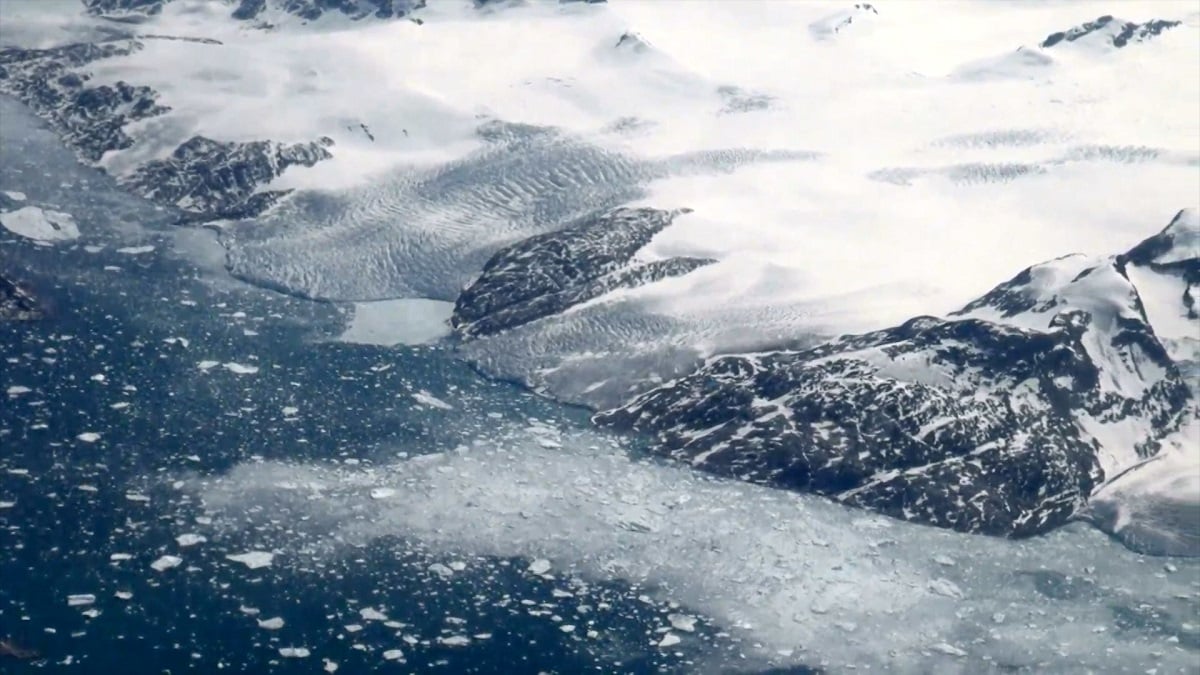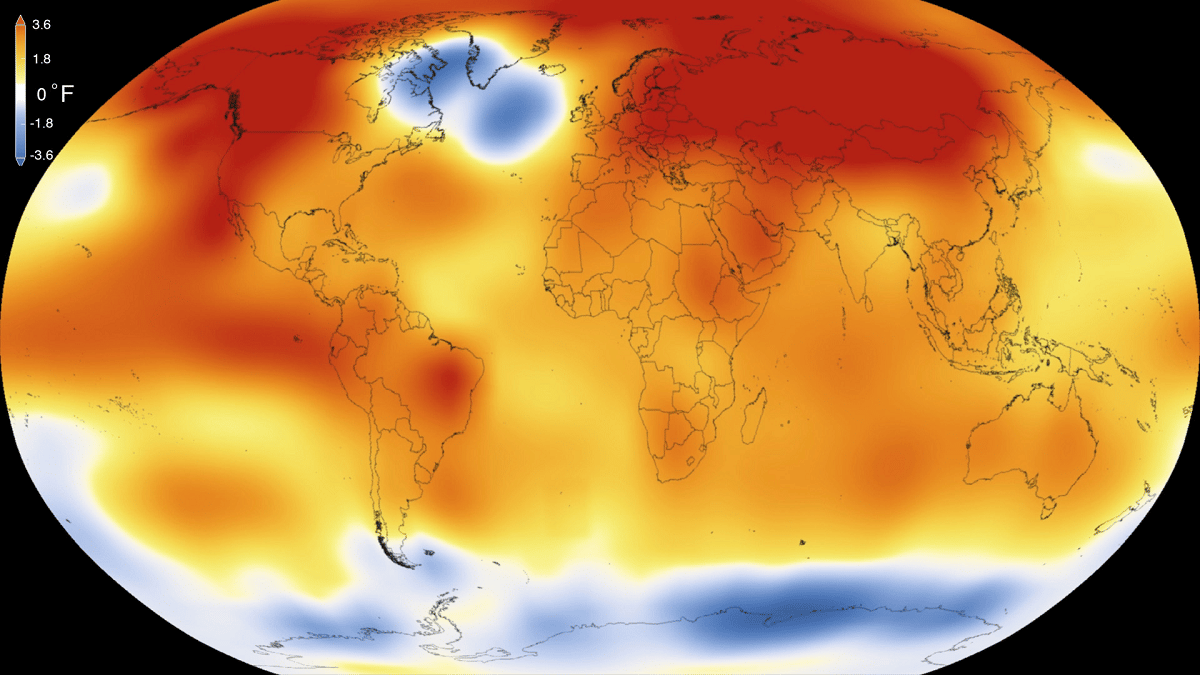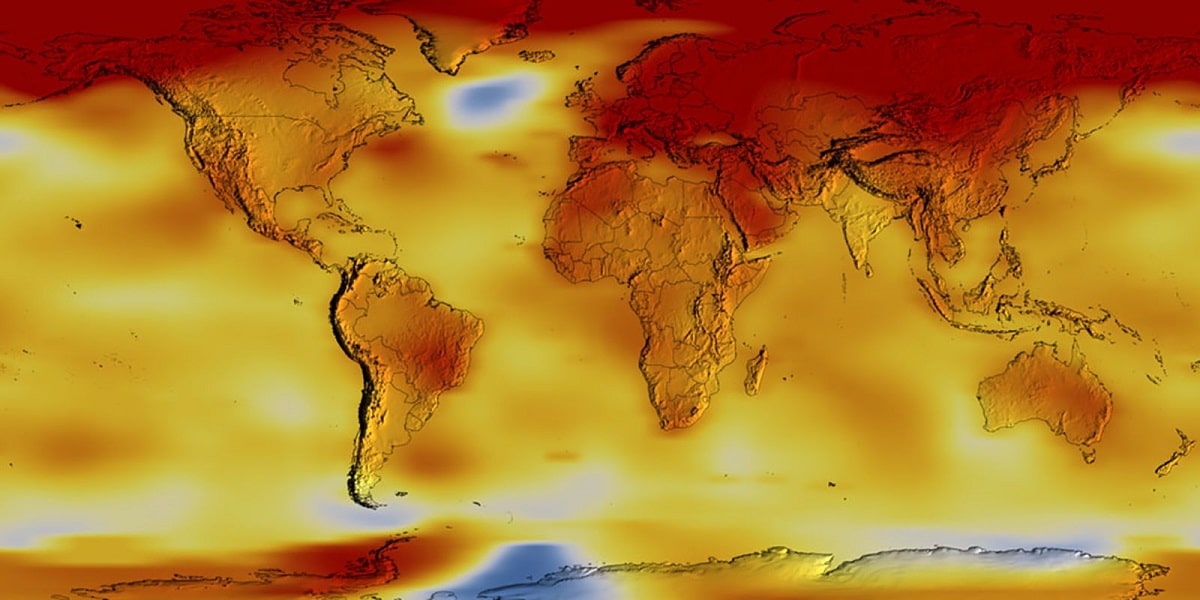
As global temperatures continue to rise, a stubbornly cold sea has risen in the North Atlantic that has baffled scientists for years. This is the warming "hole" in the North Atlantic, also known as Cold Blob. Over the past century, global temperatures have risen by an average of 1°C, while the warm hole south of Greenland has cooled by 0,9°C.
In this article we are going to tell you everything you need to know about the Cold Blob, its characteristics and the latest research.
Cold Blob

Previous research has linked the warming hole to weakening ocean currents in the North Atlantic that bring heat from the tropics. A new study published in the journal Nature Climate Change suggests that Other factors are also involved. These include changes in ocean circulation at high latitudes and cooler seas that produce more low-level clouds.
The changes are clearly attributable to anthropogenic forcing in climate model simulations and are critical to understanding the past and future evolution of the warming hole.
Most maps of global surface temperature change show red and orange bands, highlighting warming over much of the world. But some areas have not warmed significantly and have even cooled. One of those areas is an area of the North Atlantic Ocean.
This warming hole is particularly clear in the recent assessment report of the Intergovernmental Panel on Climate Change as a blue spot on the map, which shows the observed increase in global average surface temperature from 1901 to 2012.
New research

Research has shown that the warming hole is linked to a weakening of the Atlantic Meridional Overturning Circulation (AMOC), a system of ocean currents in the Atlantic that transports warm water from the tropics and beyond to Europe.
AMOC is part of a larger network of global ocean circulation models. that move heat around the world. It is driven by the cooling and sinking of brine in the high latitudes of the North Atlantic.
The study shows that the AMOC has weakened since the mid-XNUMXth century (and possibly longer) as a result of freshwater inflow into the North Atlantic from the melting of the Greenland ice sheet and rising sea temperatures and rainfall in the area.
This additional fresh water reduces the subsidence of cooling seawater, which in turn reduces the amount of warm water drawn from the tropics, weakening circulation.
The less warm water in the tropics has a cooling effect in the North Atlantic, offsetting the general warming of the ocean from rising global temperatures. As a result, the warm hole is mainly attributable to the AMOC slowdown. However, the study shows that this is just one of many factors contributing to the cooling of the ocean and atmosphere.
Cavity heating and climate change
To decipher the relationship between cavity heating, AMOC, and climate change, the researchers conducted a series of experiments using climate models. In the first set of experiments, the researchers linked ocean heat transport to typical seasonal fluctuations, removing any long-term variations to focus specifically on the role of the atmosphere.
They found that in the absence of changes in the ocean, the model still produced a warming hole, though not in the form of complete cooling, but rather weaker warming.
Other studies have shown that cloud changes have a small but noticeable effect on heating holes. Colder seas create more low-level clouds, which reduces incoming solar radiation and further cools the sea.
In a second series of experiments, the researchers focused on the role of oceanic heat transport in the warming hole. They used only one model built by the Max Planck Institute, but they ran a set of 100 simulations in the past and another 100 simulations 150 years in the future, where atmospheric CO2 levels in the air increased by 1% per year.
Here, as in previous studies, the researchers found that most of the warming hole is related to ocean circulation. Specifically, the results show that while the North Atlantic receives less heat from the tropics, it also loses more heat to the Arctic. Simulations from this model suggest that the increased ocean heat transfer from the high latitudes of the North Atlantic is due in part to the strengthening of the subpolar circulation, which redistributes heat horizontally.
This subpolar circulation is a counterclockwise circulation pattern in the surface waters of the North Atlantic Ocean. The reasons for the strengthening of the circulation are somewhat complex.. In summary, however, these changes are actually due to human emissions of greenhouse gases.
Human impact on the Cold Blob

These large ensembles make it much easier to separate the effects of climate change from past natural decades from those of climate forcing caused by human impact. In fact, Of the last 100 heating simulations, the study found that all have a heating hole.
What all the simulations have in common is that with global warming there is an increase in heat export to high latitudes. This increase mainly explains the formation of heating holes and is therefore attributable to human-emitted greenhouse gases.
This means that while the warm hole can be attributed to human-caused climate change, and the weakening of the AMOC may play an important role in its existence. It also means that the use of hole heating to infer AMOC strength, as has been the case in some studies, should be done with caution, because processes other than AMOC are involved and make the relationship difficult.
I hope that with this information you can learn more about the Cold Blob and its characteristics.